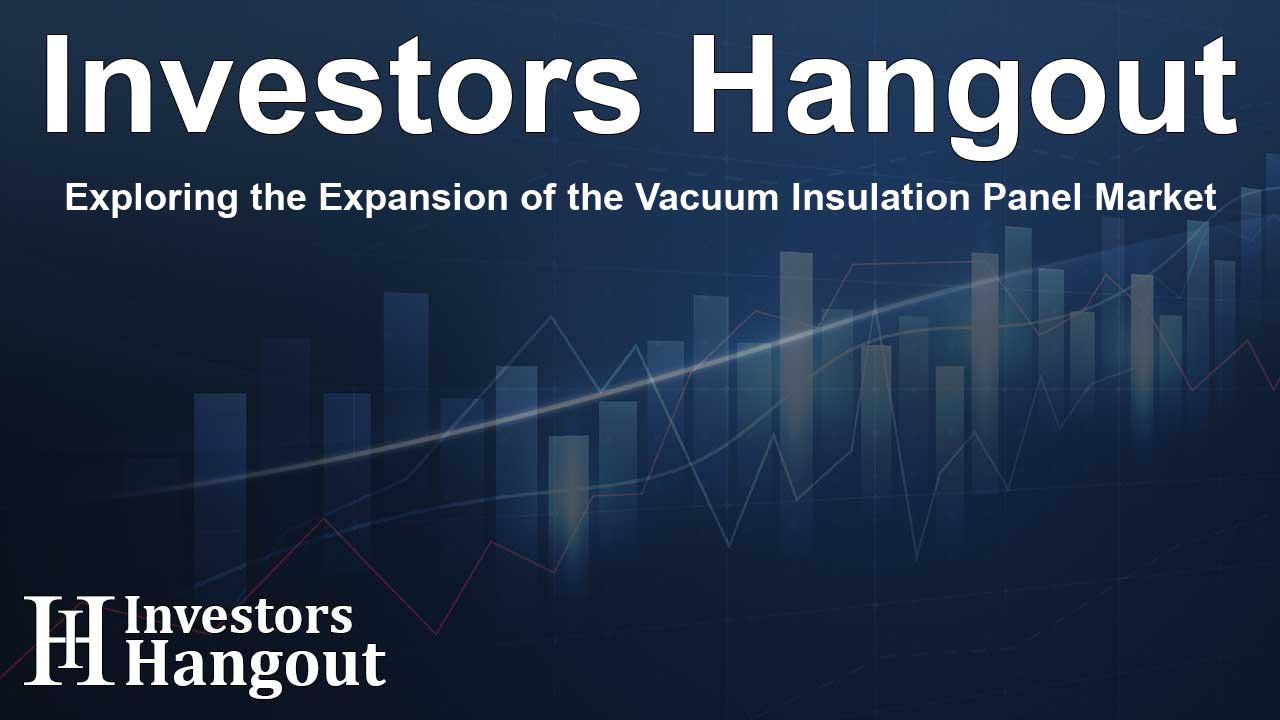Exploring the Expansion of the Vacuum Insulation Panel Market

The Vacuum Insulation Panel Market's Bright Future
The global vacuum insulation panel market has been making waves, with an impressive valuation of US$ 9.5 billion recently. Exciting projections suggest this figure will surge to an incredible US$ 13.8 billion as we approach the next decade, showcasing a compound annual growth rate (CAGR) of 4.2% from 2025 to 2033.
Innovation in Thermal Management
As we look at the vacuum insulation panel landscape, the spotlight shines on competition, particularly within the flat panel sector. Here, companies exert tremendous efforts to refine their thermal performance. Consider va-Q-tec’s va-Q-vip F panels; with a thermal conductivity design value as low as 0.007 W/(m?K), these panels are paving the way for energy-efficient construction applications.
Leading Products and Their Impact
Other players, such as Kingspan, are also at the forefront, significantly impacting energy consumption in buildings. Their Kooltherm K20 Concrete Sandwich Board stands out with a remarkable thermal conductivity of R-7.4 per inch. Such innovations are not just reserved for architecture; they extend into consumer electronics as well. For instance, Panasonic is integrating these advanced insulation technologies into their impressive OLED TV range.
Market Segmentation Insights
As market dynamics continue to evolve, understanding key segments allows businesses to tailor their strategies effectively. By 2033, the most substantial share of the market will come from construction-related applications, with an overwhelming 62.70% share. Silica, as anticipated, remains the top core material, making up 46.31% of demand.
Identifying Market Trends
The trends dictating the vacuum insulation landscape are just as compelling. Increasing adoption of innovative hybrid core materials is essential for enhanced thermal efficiency. Furthermore, emerging technologies such as smart sensors promise to monitor the integrity of these panels, offering unprecedented insights into performance and durability.
Driving Forces Behind Market Growth
Government regulations worldwide are pivotal in promoting high-performance insulation. Notably, forthcoming standards in the UK will require homes to achieve steep emissions reductions, compelling the construction sector to adopt vacuum insulation panels to adhere to these new mandates.
Challenges and Initiatives
While the market is abreast with numerous opportunities, it faces challenges as well. The potential risk of punctures during installation poses a significant concern, necessitating advancements in insulation technologies. Moreover, innovators are tackling the complexities of creating reliable seals for uniquely shaped panels.
Investments Fueling the Vacuum Insulation Panel Market
A wave of research and development activity indicates an increasingly robust investment landscape. In recent years, millions of patent applications have signaled a commitment to innovation and progress in this sector. Leaders like Samsung Electronics and LG Corporation are spearheading this charge, offering cutting-edge materials to enhance product longevity and performance.
The Role of Automation
Manufacturing efficiency is being revolutionized through automation, significantly cutting production times. Companies are actively investing in state-of-the-art facilities, ensuring they meet the rising demand for vacuum insulation panels.
Expansion in Diverse Industries
The vacuum insulation panel market's horizon expands beyond construction to sectors such as logistics and automotive, which are increasingly recognizing the thermal management advantages these panels provide. With the rapid growth of the cold chain logistics market and significant advancements in electric vehicle technology, this shift represents substantial growth opportunities.
Harnessing Sustainability for Future Growth
Sustainability is a central tenet moving forward. The future homes standard in the UK aims to curb carbon emissions significantly. This regulatory environment enhances the push for products like vacuum insulation panels, propelling them to the forefront of energy-efficient solutions.
Conclusion: A Bright Path Ahead
The vacuum insulation panel market is on an expansive trajectory fueled by innovation, stringent regulations, and a growing emphasis on thermal efficiency and sustainability. As key players continue to push the envelope, the opportunities are boundless for this promising industry.
Frequently Asked Questions
What is the projected market value for vacuum insulation panels by 2033?
The market is projected to reach approximately US$ 13.8 billion.
What are the main applications of vacuum insulation panels?
The primary applications are in construction, covering about 62.70% of market share.
Which core material is expected to dominate the vacuum insulation market?
Silica is anticipated to lead as the core material, comprising 46.31% of the demand.
What trends are currently shaping the vacuum insulation panel market?
Key trends include the adaptation of hybrid materials and integration of smart tracking technologies for product performance.
How are regulatory standards influencing the market?
Stringent regulations globally are driving the demand for high-performance insulation, making vacuum panels essential in various sectors.
About The Author
Contact Dylan Bailey privately here. Or send an email with ATTN: Dylan Bailey as the subject to contact@investorshangout.com.
About Investors Hangout
Investors Hangout is a leading online stock forum for financial discussion and learning, offering a wide range of free tools and resources. It draws in traders of all levels, who exchange market knowledge, investigate trading tactics, and keep an eye on industry developments in real time. Featuring financial articles, stock message boards, quotes, charts, company profiles, and live news updates. Through cooperative learning and a wealth of informational resources, it helps users from novices creating their first portfolios to experts honing their techniques. Join Investors Hangout today: https://investorshangout.com/
The content of this article is based on factual, publicly available information and does not represent legal, financial, or investment advice. Investors Hangout does not offer financial advice, and the author is not a licensed financial advisor. Consult a qualified advisor before making any financial or investment decisions based on this article. This article should not be considered advice to purchase, sell, or hold any securities or other investments. If any of the material provided here is inaccurate, please contact us for corrections.
